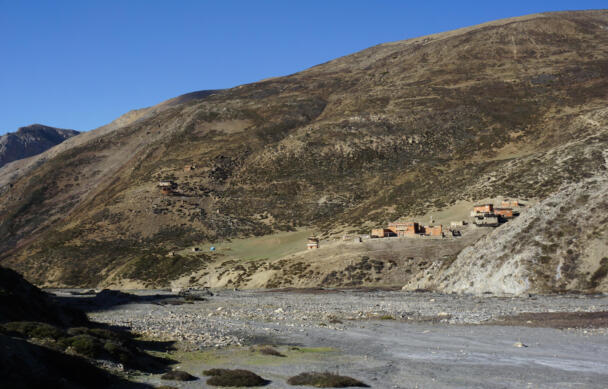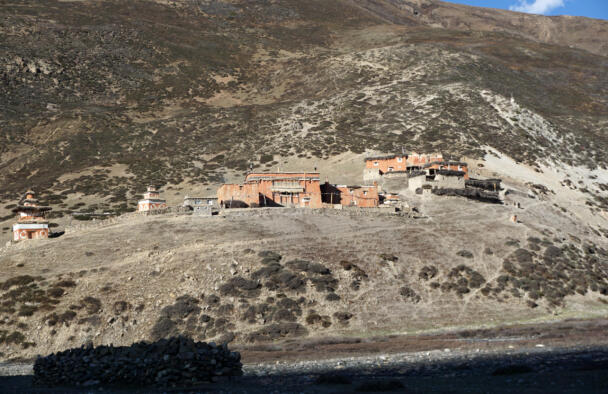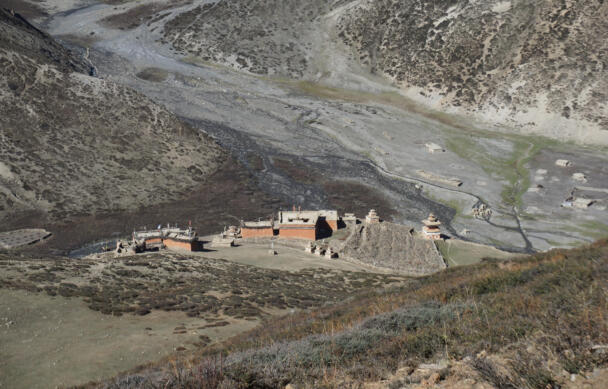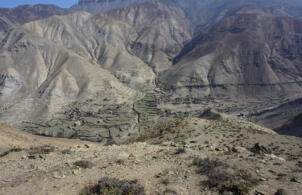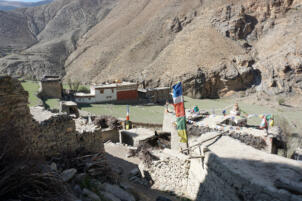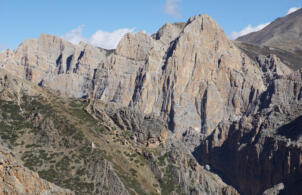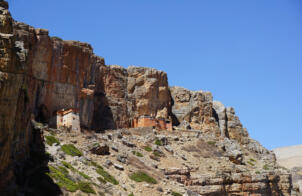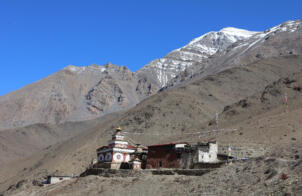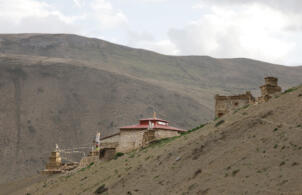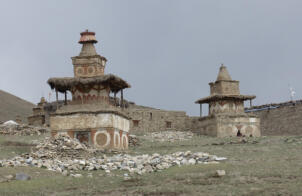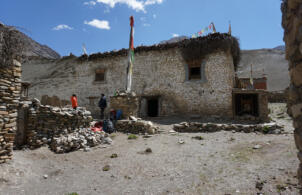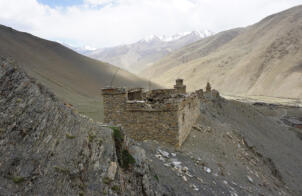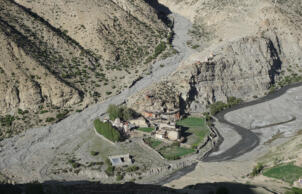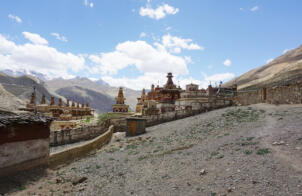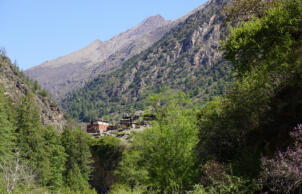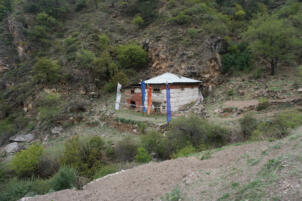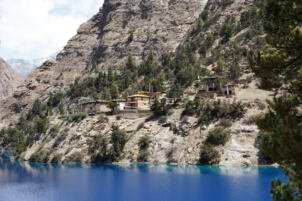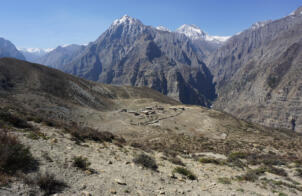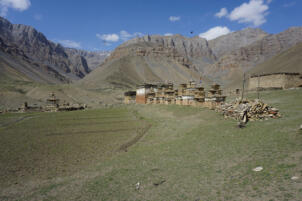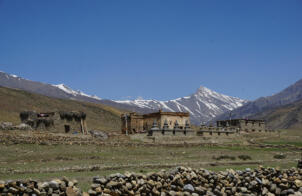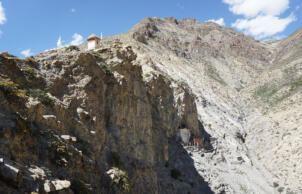Nepal
Crystal Mountain Shey
Shey Sumdo Monastery
Coordinates: 29°21’8.81” N, 82°57’56.07” E, elevation 4345 m.
The monastery of Shey Sumdo is situated north of the Phoksundo Lake in Upper Dolpo, named after the river valleys that converge here. The place is considered to be an important religious centre for both Bon and Buddhist inhabitants. The monastery was founded in the late 17th century by Lama Tenzin Ralwa of the Buddhist Kagyü tradition, and represents the development of the later temple typologies in Dolpo. As well as the Tsakhang Gompa and the Gomoche Gompa, the Shey Sumdo Monastery, also known as Crystal Monastery, is part of the most important pilgrimage site of Dolpo around the Crystal Mountain and is the outset of the pilgramage route.
The ensemble stands just above the river-junction and consists of an impressive collection of redwashed buildings surrounded by prayer-walls and chörten. The main building has two floors and is flanked by two lower buildings, right beside a huge field of mani- and matri-stones. The circumambulation path leads around the buildings and the mani-field, where chörten of different sizes are located. Four residential houses are situated in the east of the ensemle, three more can be found on the northern slope of the hill.
The entrance to the temple faces southwest, where a common forecourt is situated. Through an entrance hall with a mani chapel on its western side one can reach the assembly hall. Its interior is 8.20 to 7.60 metres (at the rear side) wide, 10.70 metres deep, and 2.90 metres high, structured by six wooden pillars that support the ceiling. The main altar, flanked by bookshelves, stands at the rear of the room opposite the entrance. The walls are covered with murals, in front of the sidewalls further altars are placed. On the east side of the entrance hall on the ground floor, a door to the staircase leads to the upper floor. Here, one first enters a spacious courtyard that is partially roofed and in whose roof construction the lantern is also constructively integrated. From this courtyard, the rooms arranged all around are accessed and it is possible to reach the roof.
Directly on the west side of the ensemble, a large meadow adjoins the temple area providing enough space for large assemblages of pilgrims who come annually or at least every twelve years in the Dragon Year. At the foot of the temple area, directly in front of the bridge that leads from the river valley up to the monastery, an impressive group of Tibetan watermills can be found.
TU Graz – IGMS, Woschitz, H. & Bauer, P. (2024): 3D Model of the survey in 2022.
References: Kind, Marietta. The Bon Landscape of Dolpo: Pilgrimages, Monasteries, Biographies and the Emergence of Bon. Berlin, Peter Lang 2012: 214-256. Mathes, Klaus Dieter. The Sacred Crystal Mountain in Dolpo: Beliefs and Pure Visions of Himalaya Pilgrims and Yogis. In: Journal of the Nepal Research Centre, ed. By A. Wezler, Vol XI 1999: 61-84. Snellgrove, David: Himalayan Pilgrimage. A study of Tibetan religion by a traveller through Western Nepal. Oxford, 1961: 73 -75, 134-146, et al.
Photo documentation
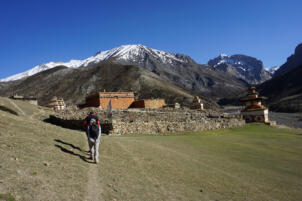
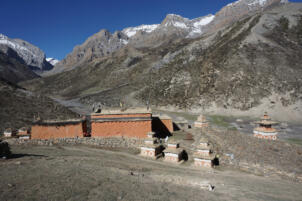
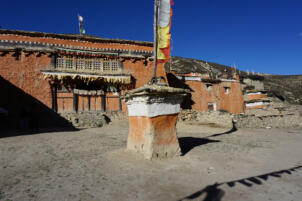
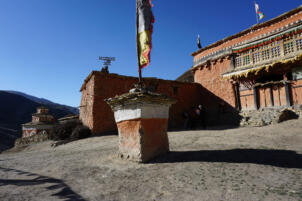
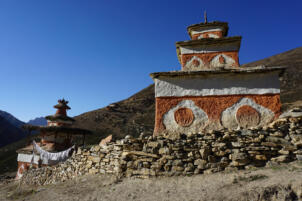
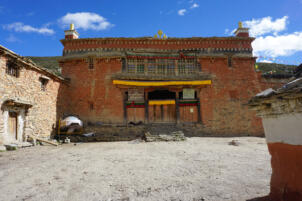
Interior
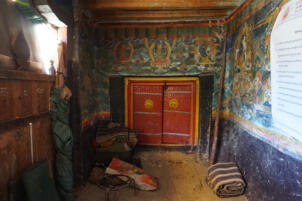
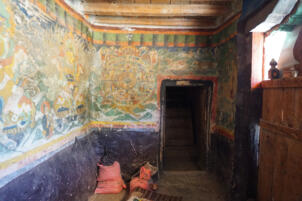
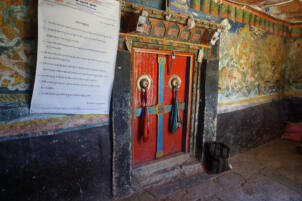
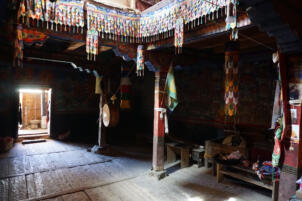
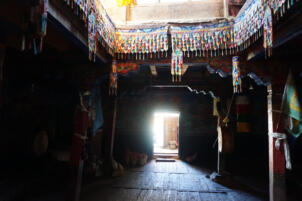
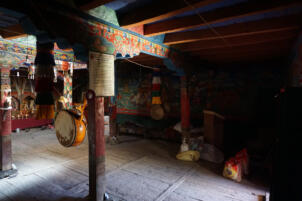

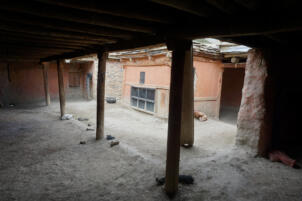
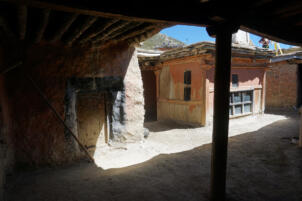
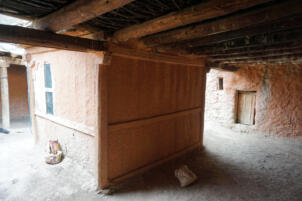
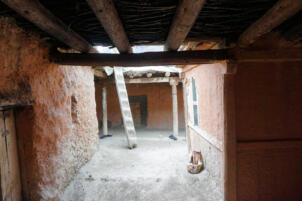
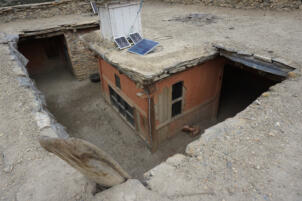
3D Views
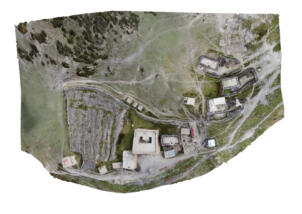
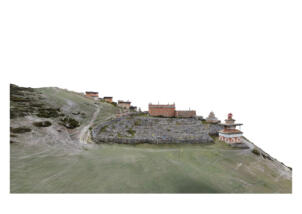
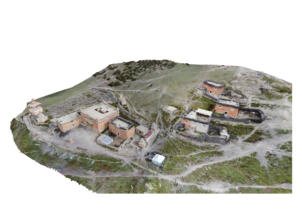
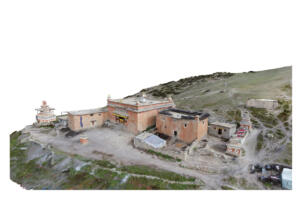
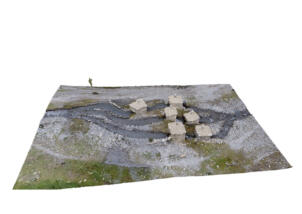
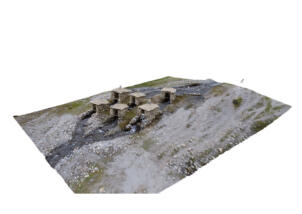
2D Plans
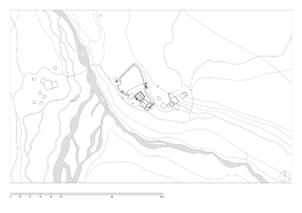
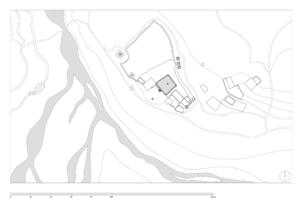
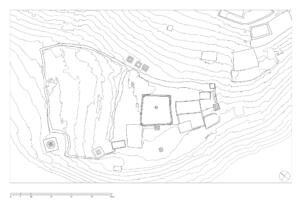
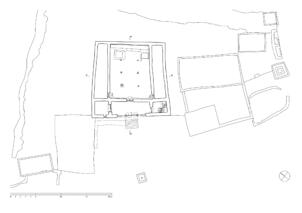
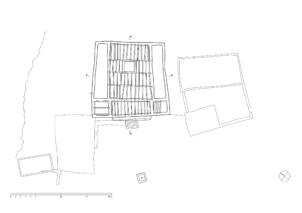
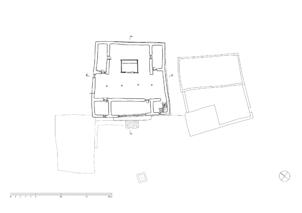
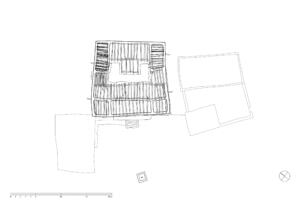
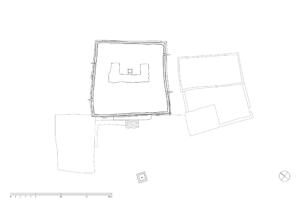
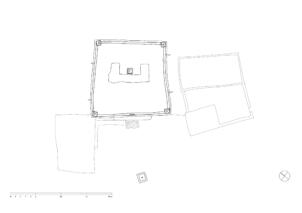
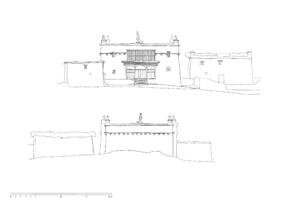
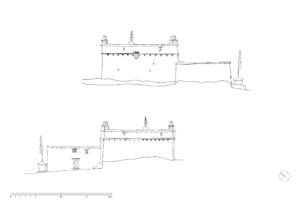
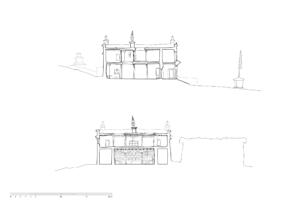
More from
